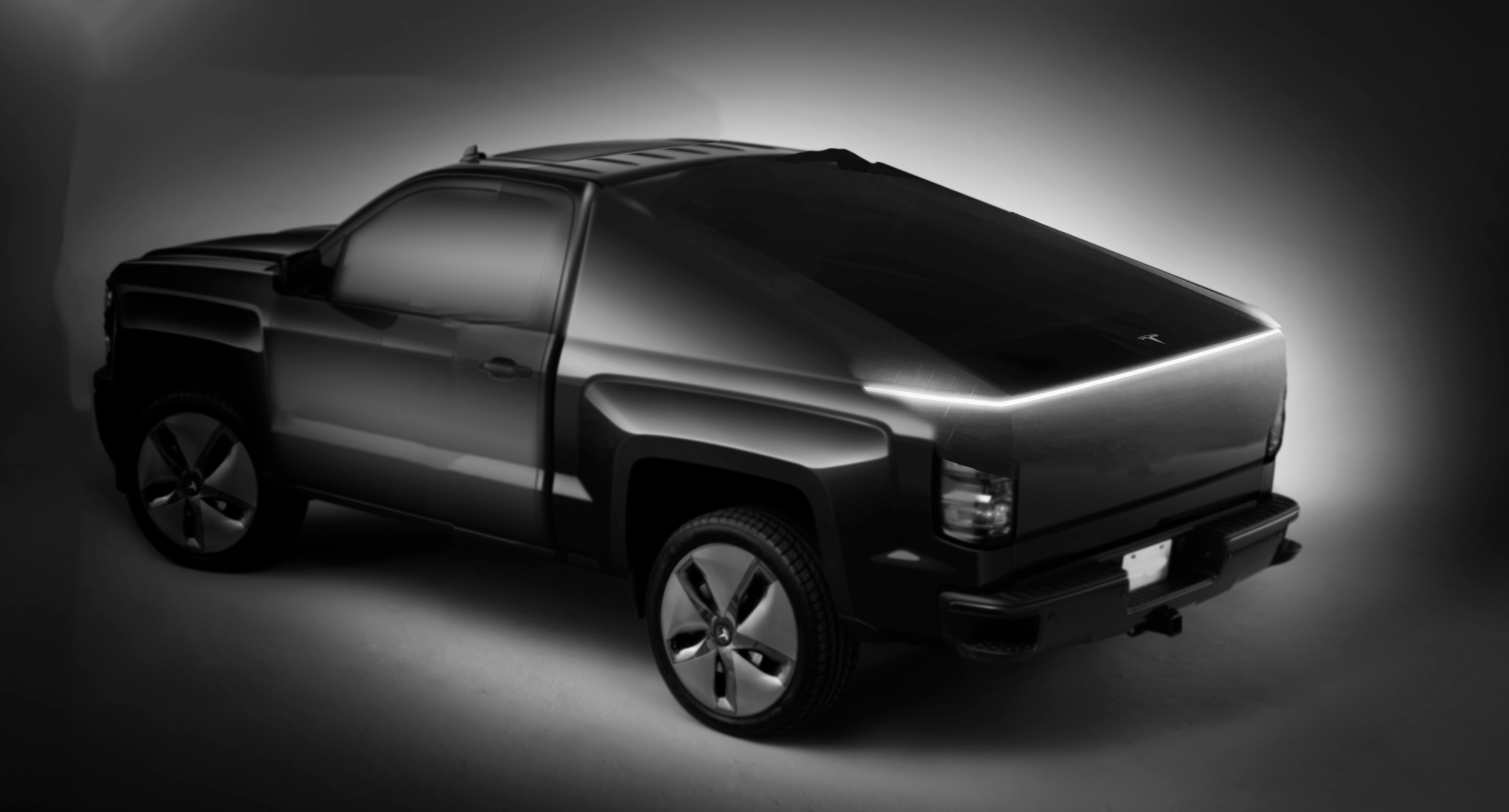Can an Aussie icon make the switch to EV? And if it does, will regional Aussies accept it?
As much as we might like to deny it, electric vehicles have long been associated with a latte-sipping, inner-suburbs lifestyle. It’s not anybody’s fault, we aren’t pointing fingers, but the point remains: EVs just aren’t viable yet for large swathes of regional Australia. The infrastructure hasn’t been built to enable rural Aussies to travel long-range without using a combustion engine. Not to mention EV design thus far has been consistently urban-focused — but that might all be about to change.
Rare sightings
Tesla fans were greeted last month by a surprise teaser for a “cyberpunk truck” at the reveal event for the upcoming Model Y — not that anyone noticed. Elon Musk and his team hid the image so well that none of the attendees picked up on it. Although in their defence, that might be because there’s very little to see:
About a minute in, we flashed a teaser pic of Tesla cyberpunk truck pic.twitter.com/hLsGsdyuGA
— Elon Musk (@elonmusk) March 16, 2019
Most Aussies would scoff at the idea of a “pickup truck” making its way Down Under, but let’s be realistic: there’s a very good chance this will be the closest thing we get to an EV ute for the foreseeable future. That said, we still know almost nothing about it — even which end of it the teaser image is showing. The prevailing theory so far seems to be that the image is aimed at the vehicle’s rear. Reddit user u/waytomuchsparetime created the following projection based on that assumption:
Reproduced from reddit.com — image by u/waytomuchsparetime
This kind of design is much more like the utes we’re used to seeing, and could potentially sway a large segment of the tradie and ute enthusiast crowd. All that space in the bed could be optimised to hold enough batteries for some serious range potential, and Elon Musk has already hinted that it will dwarf the towing strength of its combustion competition.
12,000 lbs!? How puny. Do you construct children’s toys?
— Elon Musk (@elonmusk) March 26, 2019
But all that is conjecture until we get the full picture (quite literally). The full reveal of Tesla’s “cyberpunk truck” is expected to take place later this year and should answer most questions. For a more concrete example right now, we can look to the electric Ford F-150 prototype sighted in the US last week:
Once again, this is clearly a test vehicle and hasn’t even been announced, but the evidence seems to suggest that Ford are seriously considering an electric variant for their US pickup trucks. This would suggest the possibility of a corresponding EV ute making its way here sometime in the next few years. But would it be worth it?
Why bother?
I can hear the cries now: “Aussies will never buy an electric ute!” “Diesel or no deal!” And yes, we do have to concede that a portion of the Australian population remain principally opposed to buying an EV, particularly in rural areas. However there are a few criteria that, if met, could persuade even the most passionate Big Engine adherent: price and practicality.
First of all: price. This is a big one for Australians regardless of where they live, and that’s unlikely to change. History has shown that EVs will likely remain expensive up-front for several years, but the significant savings on maintenance and on-road costs will make them seriously attractive for regional customers once the vehicles’ range and available infrastructure is up to the task.
The Toyota Landcruiser Prado — one of Australia’s most popular cars for regional customers — requires servicing every 10,000 km’s (or 6 months) and uses 7.9L of diesel per 100 km in ideal conditions. That’s after an already-costly $77,990 RRP, so it’s not hard to see why regional drivers would love the significantly reduced on-road and maintenance costs of an equivalent EV.
EVs also have significant benefits for hard-working vehicles like utes & 4WDs, many of which your average petrolhead is unlikely to know about. Firstly, they deliver 100% of their torque from the get-go, as opposed to the slow buildup experienced by combustion vehicles. This provides enormous potential for towing and carrying heavy loads, something farm & trade vehicles are frequently required to do.
They also provide an advantage specific to workhorse vehicles: weight distribution. Providing adequate bed-space for utes has historically come at the cost of poor traction on the rear wheels; you just can’t fit major combustion components back there without sacrificing significant amounts of space. EV battery packs, however, are extremely dense with a low profile, allowing for positioning below the bed without infringing too far into it.
These are exactly the kind of advantages that common sense Aussies love to see. Our love affair with big diesel engines wasn’t born out of blind masculinity, it came about because they were the best at tackling the challenges of Australian industries and our environment. If EVs can do the same job better, we might just see those old attitudes change.



